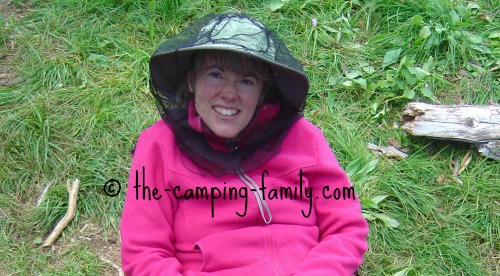Wasp Sting Prevention
A wasp sting can spoil a picnic or an afternoon at camp. It can really hurt!
The good news is that you can reduce your risk of getting a wasp sting by taking some common sense precautions.
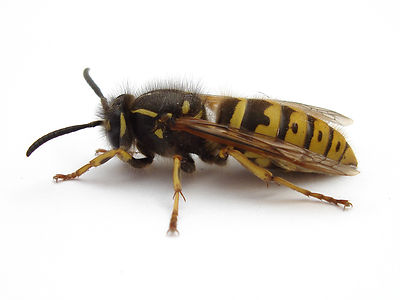
Keep Wasps and Bees Away From You
Artificial Wasp Nests
Wasps are territorial creatures. The theory is that if there is another wasp nest nearby, they will stay away.
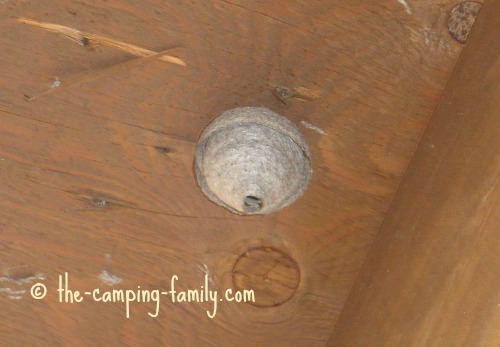
You can make your own fake nests by inflating brown paper bags with air and tying them closed.
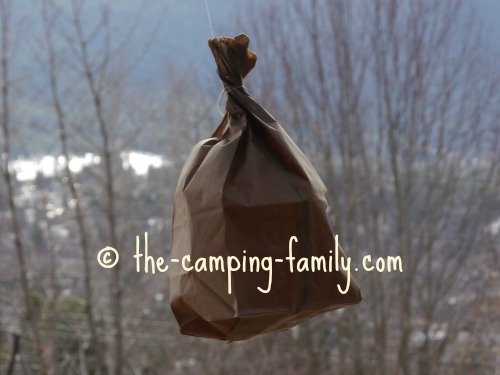
You can even buy a ready-made fake wasp nest that looks very much like a real wasp nest.
Do they work?
That's a good question! We have tried using both paper bags and the Waspinator.
- If there were wasps in the area already, hanging one of these didn't chase them away.
- But, if there were no wasps in the area and we hung one of these, we didn't see wasps appear - but who knows whether they would have anyway?
Wasp Sting Prevention
Trap Them
There are lots of different wasp traps on the market. Most of them involve luring wasps and bees into a bottle filled with sugary liquid.

The insects get trapped and drown in the liquid.
Do they work?
The sugary liquid definitely does attract wasps and bees, and the design of the bottle does prevent them from getting out.
However, since bees and wasps can smell sweets from a long way away, you may be attracting more than you trap!
When we tried this, we trapped lots of bees - but we were bothered by many more.
It can't hurt to try one of these, though. They are quite nice to look at!
Here's a nice-looking glass wasp trap on Amazon.
Wasp Sting Prevention
In spite of your best efforts, wasps and bees may invade your campsite, but you can still minimize your chances of getting a wasp sting.
Bees and wasps sting in defence. They are not biting you or feeding on your blood like mosquitoes do. They are just trying to warn you away from their territory.
The best way to avoid being stung is to avoid attracting them to you, and let them know you are not a threat.
Wear light colored clothing
Wasps and bees feed from flowers, so let them know that you are not a flower!
Don't wear brightly colored clothing - especially floral prints!
Don't wear perfume or scented products
You don't want to smell like a flower, either!
Cover up
Wear long-sleeved tight-fitting clothes to prevent wasps from flying inside your clothing.
Wear shirts with tight cuffs, and tuck your pants into your socks.
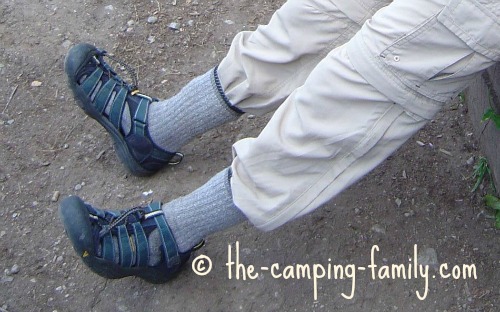
You can buy a mosquito head net or investigate insect shield clothing.
This is an especially great idea for those who are allergic to stings, or for small children (and others!) who have a particular fear of being stung.
Be careful when eating outdoors
Be especially alert when eating sugary foods and drinks.
Look at your can or bottle before you put it to your lips. There may be a wasp inside the rim!
As soon as you finish a drink, rinse out the empty glass or can.
Keep a clean camp
Don't leave food scraps sitting around.Wasps love scavenging on scraps of food left lying about.
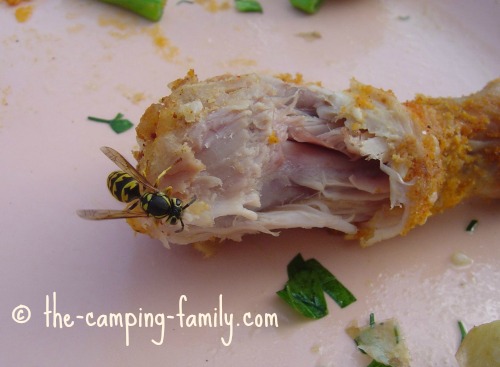
Clean up immediately after a meal.
Don't leave fruit peels or pits out.
Wrap up your garbage and dispose of it as soon as possible.
Stay calm
If a wasp or bee does fly around you, resist the obvious temptation to run - or to slap it.
Stand still and breathe quietly.
Once the bee or wasp realizes that you are not a flower or a threat, it will leave.
The bottom line
If you follow these suggestions, you probably won't be stung by a wasp - but if you are, visit this page to learn how to treat wasp stings.
Now that you know about wasp sting prevention, click here to learn about more camping safety issues.
Before you begin packing for your next trip, why not visit The Camping Family home page? You'll find oodles of helpful ideas.
Most Popular
Product of the Month
Amazon Basics 40°F Cool Weather Two-Person Sleeping Bag
Cool weather is here!
CLICK HERE for more information and best price
Recent Articles
-
Camping Sites In Normandy France - We review some of the best!
Nov 24, 25 03:14 AM
We check and review a number of camping sites in Normandy France, and recommend the ones that we think are the best. -
Camping Sites In The South Of France; We Review Some Of The Best!
Nov 24, 25 02:46 AM
We check and review a number of camping sites in the south of France, and recommend the ones that we think are best! -
Camping Sites Near Paris France - Which One Should You Choose?
Nov 24, 25 02:42 AM
Find out which camping sites near Paris France are the best, and discover the camp sites near Paris to avoid!

